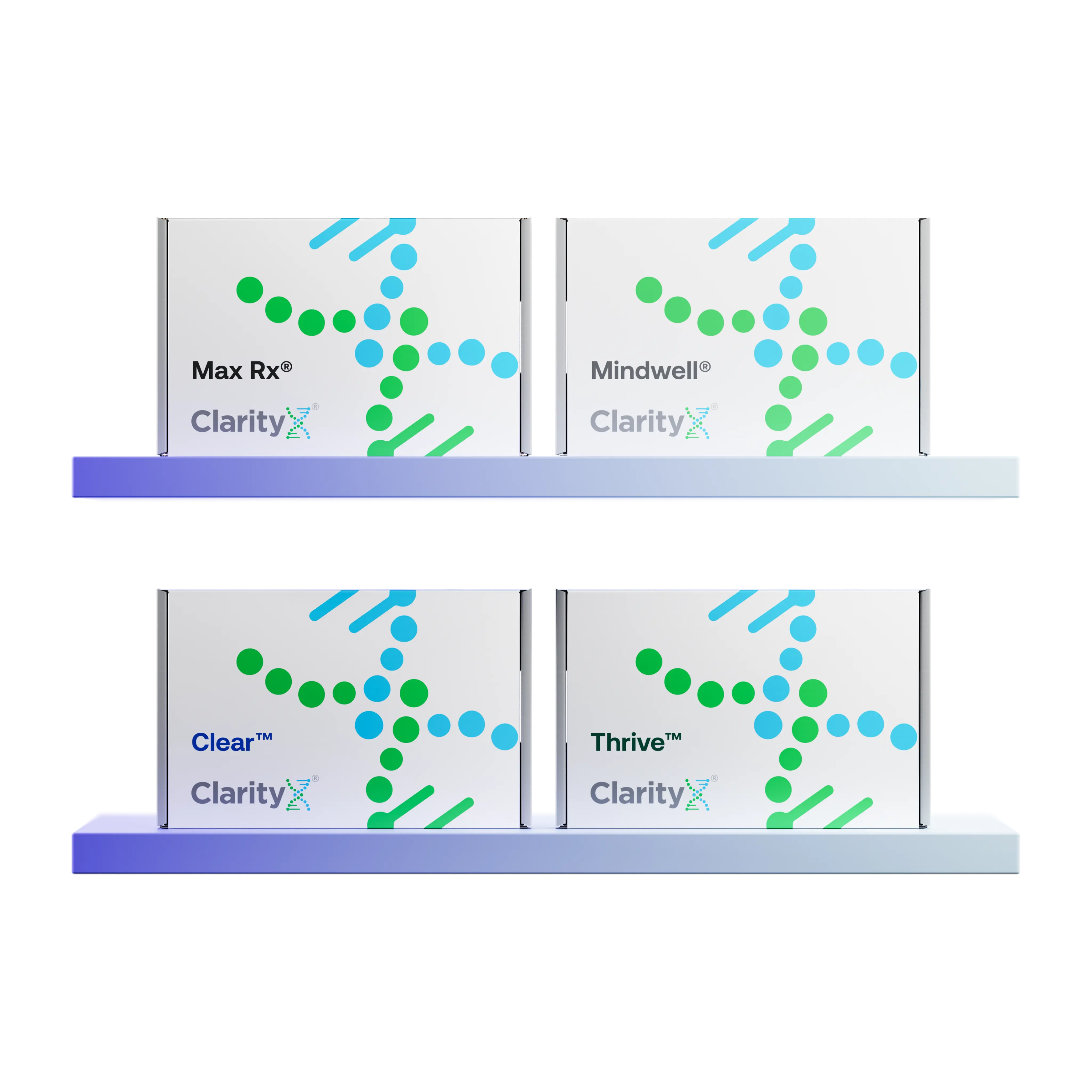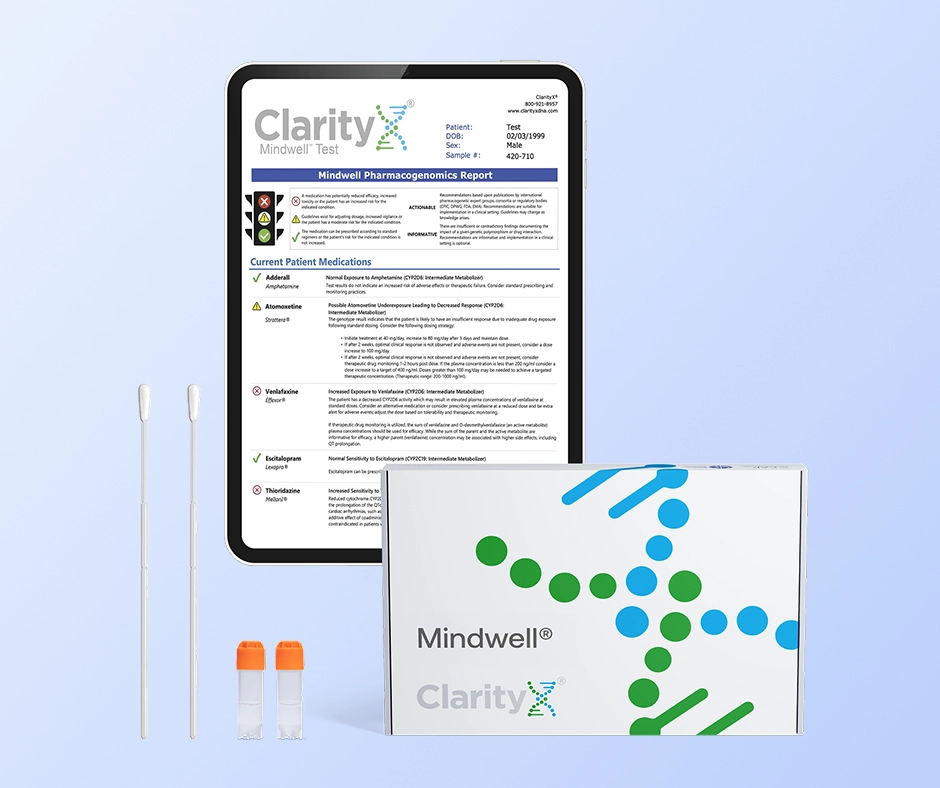Key Highlights
- Bipolar disorder is a mental health condition that causes extreme mood swings, with periods of emotional highs called manic episodes and lows known as depression.
- The main symptoms of bipolar disorder are episodes of mania, hypomania, and depression. These episodes can change your energy, activity, and behavior.
- Getting a diagnosis from a healthcare professional is important to tell bipolar disorder apart from other conditions.
- There are effective treatments for bipolar disorder. These often include medication, like mood stabilizers, along with therapy.
- Although bipolar disorder lasts a lifetime, ongoing treatment can help you manage the symptoms well.
Introduction
Everyone has ups and downs, but for some people, these changes are much more intense. Bipolar disorder is a mood disorder that causes strong shifts in mood, energy, and activity, making daily tasks harder. Learning about this condition is the first step to recognizing its signs and finding ways to manage it. If you or someone you know has severe mood swings, understanding bipolar disorder can help bring clarity and hope.
Understanding Bipolar Disorder
Bipolar disorder is a complex mental health condition characterized by dramatic shifts in mood and energy. These shifts, known as episodes of mania and depression, are more severe than the typical ups and downs most people experience. This mood disorder can disrupt your work, relationships, and daily life.
To better understand what it means to live with bipolar disorder, it’s helpful to look closer at what the condition is, the different forms it can take, and the people it affects. Let’s explore the specifics to build a clearer picture of this disorder.
What Is Bipolar Disorder?
Bipolar disorder, which used to be called manic-depressive illness, is a mental disorder that causes strong and potentially disruptive changes in mood, energy, activity, and focus. These mood swings can go from feeling very "up" and full of energy (manic episodes) to feeling very "down" and hopeless (depressive episodes).
Unlike ordinary mood changes, the shifts in bipolar disorder can be so severe that they interfere with your daily functioning. Symptoms often first appear during the late teen years or in early adulthood.
Symptoms of bipolar disorder may come and go, but it is usually a lifelong condition that needs ongoing treatment. With the right plan, you can manage your mood swings and other symptoms.
Types of Bipolar Disorder
There are a few different types of bipolar disorder, each defined by the pattern and severity of mood episodes. Understanding these categories can help clarify a diagnosis and guide treatment. The main types include:
- Bipolar I
- Bipolar II
- Cyclothymic Disorder
Bipolar I disorder is marked by at least one manic episode that lasts for a minimum of seven days or is so severe that it requires hospitalization. People with Bipolar I often experience depressive episodes as well.
Bipolar II disorder involves a pattern of depressive episodes and hypomanic episodes, which are less severe than the full manic episodes seen in Bipolar I. Some individuals experience four or more episodes within a year, a pattern known as rapid cycling.
Cyclothymic disorder involves periods of hypomanic and depressive symptoms that are not as intense or long-lasting as full episodes. In adults, these symptoms persist for at least two years, while in teenagers, they last for at least one year.
Prevalence and Who Is Affected
Bipolar disorder can affect anyone, but research suggests that certain factors increase the risk. It often begins in late adolescence or early adulthood and impacts people across the United States, regardless of background.
Genetics plays a significant role; your risk is higher if a close family member, like a parent or sibling, has the disorder. However, having a family history does not mean you will definitely develop it. Each person’s experience with bipolar disorder is unique, and knowing the difference between manic and depressive episodes helps in understanding who is affected.
Environmental factors also play a part. Stressful life events, trauma, or substance use can trigger the disorder, especially in people who are already at risk due to genetics.
Main Symptoms of Bipolar Disorder
The defining features of bipolar disorder are the dramatic mood swings that cycle between emotional highs and lows. The main symptoms of bipolar disorder fall into distinct categories known as mood episodes. These episodes cause symptoms that can last for a week or more, affecting you every day for most of the day.
These episodes include periods of elevated mood, called mania, and periods of sadness, known as depressive episodes. Some people also have mixed episodes with both manic and depressive symptoms. Here are the signs of each.
Recognizing Manic Episodes
A manic episode is a time when your mood is unusually high or irritable, and your energy and activity levels are much higher than normal. These changes are very different from your usual self and can disrupt your life. Sometimes, manic symptoms are so severe that hospital care is needed for safety.
Some people have a milder form called hypomania, where you may feel very good and productive. You might not notice anything is wrong, but friends and family may see changes in your mood and activity. This increased activity can be a sign of a problem.
Key manic symptoms include:
- Feeling very "up," high, or elated
- Being jumpy, wired, or more active than usual
- Having racing thoughts and talking very fast
- Decreased need for sleep
Identifying Depressive Episodes
A depressive episode causes intense sadness, hopelessness, or a lack of interest. These symptoms are more than just a bad mood; they can be so severe that even simple tasks feel hard. You may lose interest in activities you once enjoyed.
These symptoms of depression can also cause physical changes. You might notice shifts in your appetite that lead to weight gain or loss, or you may find yourself sleeping far more or less than usual. Your energy levels may feel completely depleted.
Common signs of a depressive episode are:
- Feeling very sad, down, or anxious
- Having very little energy or feeling slowed down
- Loss of interest in almost all activities
- Thinking about death or suicide
Mixed Episodes and Their Signs
Is it possible to have both manic and depressive symptoms at the same time? Yes, this is called a mixed episode. During a mixed episode, you may have symptoms of both mania and depression at once or in quick succession. This can be very confusing and upsetting.
Imagine feeling extremely energized and agitated, yet also filled with hopelessness and sadness. This combination of manic symptoms and depressive symptoms can create a volatile emotional state. These rapid mood changes can be very challenging to manage and often require immediate attention from a healthcare provider.
Signs of a mixed episode may include:
- Feeling sad or hopeless while also feeling extremely energized
- Racing thoughts combined with feelings of worthlessness
- Irritability, agitation, and trouble sleeping
Distinguishing Bipolar Disorder Symptoms
Bipolar disorder symptoms are mainly defined by shifts between manic and depressive episodes. However, these symptoms can look different for each person. The mood changes are central to the disorder, but their intensity, frequency, and duration can vary.
Knowing these differences is important for recognizing bipolar disorder in yourself or someone else. We’ll look at how mania and depression differ, common behavior changes, and how symptoms can vary from person to person.
Differences Between Mania and Depression
Recognizing the difference between a manic and a depressive episode is crucial for understanding bipolar disorder. In simple terms, mania is characterized by high energy, while depression is defined by low energy. These opposing states are the hallmark of the condition's mood swings.
Mania symptoms include feeling very happy, having racing thoughts, and needing less sleep. Depression symptoms include feeling sad, trouble concentrating, and often sleeping too much. You may think and talk quickly during mania, but slowly during depression.
Here’s a quick comparison to highlight the differences:
- Energy: High and hyperactive in mania vs. low and lethargic in depression.
- Mood: Elated and irritable in mania vs. sad and hopeless in depression.
- Behavior: Impulsive and risky in mania vs. withdrawn and inactive in depression.
Common Behavioral Changes
The big changes in mood and energy that come with bipolar disorder often lead to noticeable changes in behavior. These can affect your relationships, work, and well-being. During mania, you might do things that show poor judgment.
Conversely, a depressive episode can make it feel impossible to do even simple things. Your energy levels plummet, and you may withdraw from social activities you normally enjoy. These behavioral shifts are often what alert family and friends that something is wrong, especially when they co-occur with other health conditions.
Common behavioral changes include:
- Doing risky things like spending a lot of money or having reckless sex
- Talking very fast during mania or very slowly during depression
- Isolating yourself from others
- An inability to maintain work or social responsibilities
- Changes in appetite or sleep patterns
Variations in Symptoms Among Individuals
The symptoms of bipolar disorder can indeed vary significantly between individuals. Your bipolar disorder experience is unique, shaped by the type of disorder you have, its severity, and whether you have any co-occurring health conditions, such as an anxiety disorder or ADHD.
For example, some people have hypomania, a milder form of mania, and may not notice their behavior is unusual. Others have severe manic episodes that need hospital care. The number of mood episodes also varies, and some people have rapid cycling.
Furthermore, treatment can have different side effects for each person, and the presence of other medical issues can complicate symptoms. This variability is why a personalized diagnosis and treatment plan from a healthcare professional is so important.
Early Warning Signs and Risk Factors
Spotting bipolar disorder early can lead to better treatment and a higher quality of life. There are often early signs that someone may be developing the condition. Knowing these signs and risk factors can help you decide when to seek help.
Both genetics and environment play a role. A family history of the disorder is a major risk factor, but environmental risk factors like stress and trauma can also contribute. Let's examine the early signs and contributing factors more closely.
Early Indicators of Bipolar Disorder
The first signs of bipolar disorder typically emerge in late adolescence or early adulthood. These early warning signs can sometimes be subtle and mistaken for typical teenage angst or the stresses of young adulthood. However, they often form a pattern of noticeable changes over time.
One of the most common early indicators is experiencing significant mood swings that seem more intense than usual. You might have periods of high energy and excitement followed by episodes of deep sadness. These early depressive symptoms might be what first prompt you to seek help.
If you notice these signs in yourself or someone else, it’s important to talk to a health care provider. Early warning signs can include:
- Prolonged periods of depression
- Noticeable shifts in sleep patterns
- Unusual changes in energy and activity levels
- Episodes of irritability or agitation
Genetic and Environmental Risk Factors
The exact cause of bipolar disorder is unknown, but research shows it’s due to both genetic and environmental risk factors. Genetics are important, since the disorder often runs in families. Having a close relative with bipolar disorder increases your risk.
But genetics are not the only factor. Even identical twins can have different experiences with bipolar disorder. This means environmental risk factors are also important. Stressful events, trauma, or substance use can trigger the disorder, especially if you are already at risk due to genetics.
Key risk factors include:
- A family history of the disorder
- Experiencing trauma or highly stressful life events
- Differences in brain structure and function
- Substance use or misuse
Diagnosis and Assessment
Getting an accurate diagnosis is a key step in managing bipolar disorder. Because its symptoms can look like other conditions, a thorough assessment by a qualified professional is needed. This process is more than just talking about your mood; it involves a full evaluation.
A proper diagnosis is typically made by a mental health specialist who can consider all aspects of your health care. Let’s explore how professionals diagnose the condition, the tools they use, and why the duration of symptoms matters.
How Healthcare Professionals Diagnose Bipolar Disorder
To diagnose bipolar disorder, your health care provider will start with a comprehensive evaluation. This usually includes a physical exam and medical tests to rule out other conditions, like thyroid disease, that can mimic bipolar symptoms. From there, you will likely be referred to a mental health professional for a full assessment.
The diagnosis is not based on a single test. Instead, mental health professionals look at your lifetime history of symptoms, experiences, and family history. They will ask about the severity, length, and frequency of your mood episodes to determine if they meet the criteria for bipolar disorder.
Sometimes, getting a diagnosis can take years because the symptoms are complex. For example, people with Bipolar II may only get help for depression, so hypomania goes unnoticed. Looking closely at your history helps avoid misdiagnosis.
Diagnostic Tools and Evaluations
A range of diagnostic tools is used to ensure an accurate evaluation for bipolar disorder. A mental health specialist will use these methods to build a complete picture of your symptoms and experiences. This process is crucial for distinguishing bipolar disorder from other mental health conditions.
The evaluation begins by gathering information. This means talking in detail about your symptoms, your personal and family medical history, and any life events that may have triggered symptoms. Your provider will also look at how your symptoms affect your daily life.
Key diagnostic tools and steps in the evaluation include:
- Physical Exam: To rule out any other medical causes for your symptoms.
- Mental Health Evaluation: A detailed assessment conducted by a psychiatrist or psychologist to discuss your thoughts, feelings, and behavior patterns.
- Mood Charting: Keeping a journal of your daily moods, sleep patterns, and life events can help identify patterns.
Symptom Duration and Episode Length
How long symptoms last is important for diagnosing bipolar disorder. The length of each episode helps professionals tell the different types of the disorder apart and separate them from normal mood changes. For a mood swing to count as an episode, symptoms must last a certain amount of time.
For example, episodes of mania are defined by a symptom duration of at least one week, while major depressive episodes must last at least two weeks. The length of these episodes of depression and mania helps confirm the diagnosis.
This table outlines the typical duration required for a diagnosis:
Effective Treatment Approaches
Although bipolar disorder is a lifelong illness, there are many effective treatments to help manage it. With the right approach, even severe cases can be controlled. Treatment usually lasts long-term and often combines different strategies.
Ongoing treatment can help you manage symptoms and live a healthy, productive life. If you think someone has symptoms, encouraging them to get help is the most important first step. Here are the main ways bipolar disorder is treated.
Medication Options for Bipolar Disorder
Medication is a cornerstone of treatment for bipolar disorder. The primary goal is to stabilize mood and reduce the severity of both manic and depressive episodes. Because the condition is complex, a combination of medications is often used.
- Mood Stabilizers: These are typically the first-line and long-term treatment. The most well-known is Lithium, which remains a highly effective option. Other first-line mood stabilizers include anticonvulsant medications, such as Valproic Acid (Depakote) and Lamotrigine (Lamictal).
- Atypical Antipsychotics: These medications, such as Olanzapine (Zyprexa), Quetiapine (Seroquel), or Risperidone (Risperdal), are often used to control the symptoms of an acute manic episode. They can also be used as part of a long-term maintenance plan.
- Antidepressants: Antidepressants are sometimes prescribed to treat a depressive episode, but often in combination with a mood stabilizer or antipsychotic, as taking an antidepressant alone can risk triggering a manic episode.
It’s important to work with your health care provider to find the right medication or combination, as it may take a few tries. Talk about any side effects, and never stop taking your medication without checking with your doctor first.
Eliminating the Guesswork with Pharmacogenetic (PGx) Testing
Finding the right medication for bipolar disorder can be a frustrating process of trial and error. If a medication doesn’t work, it can mean ongoing symptoms or even serious side effects.
This is where the science of pharmacogenetics (PGx) provides a critical advantage.
Pharmacogenetic testing analyzes your unique genetic makeup through a simple, painless cheek swab to help predict how your body will respond to specific medications. A ClarityX Mindwell® test provides a data-driven report that is uniquely valuable for bipolar disorder:
- Crucial Safety Insights (Lamictal & Tegretol): This is the most critical factor. Certain genes, like HLA-B*1502 and HLA-A*3101, are associated with a dramatically increased risk of developing Stevens-Johnson Syndrome (SJS), a rare but life-threatening skin reaction, when taking medications like Lamotrigine (Lamictal) and Carbamazepine (Tegretol). A PGx test can identify patients with these genetic variants before the first dose is ever prescribed, allowing a doctor to select a safer alternative.
- Metabolism and Side Effects (Antipsychotics): Atypical antipsychotics, such as Olanzapine and Quetiapine, are primarily metabolized by the cytochrome P450 (CYP450) enzyme system (e.g., CYP1A2 and CYP2D6). If you are a "Poor Metabolizer," a standard dose can build up in your system, leading to severe side effects like extreme sedation, dizziness, or rapid weight gain. A PGx test identifies this, allowing your doctor to prescribe a much lower dose or a different medication.
- Efficacy (Antidepressants): If an antidepressant is used, the MTHFR gene is a key factor. A variant here can impair your body's ability to produce the very neurotransmitters (serotonin, dopamine) that the medication targets, making it less effective.
By looking at your full genetic profile, a ClarityX report gives your doctor the information needed to create a safer, more personalized treatment plan from the start.
It’s important to work with your health care provider to find the right medication or combination, as it may take a few tries. Talk about any side effects, and never stop taking your medication without checking with your doctor first.
For severe cases that don't respond to other treatments, your doctor may suggest other options:
- Electroconvulsive therapy (ECT): A brain stimulation procedure that can quickly relieve severe symptoms.
- Transcranial magnetic stimulation (TMS): A less invasive procedure that uses magnetic waves to help with depression.
Psychotherapy and Lifestyle Strategies
Along with medication, psychotherapy or "talk therapy" is an important part of treatment. Therapy offers support, education, and strategies to help you and your family manage the disorder. It can help you identify and change difficult emotions, thoughts, and behaviors.
Lifestyle changes also play a significant role in your ongoing treatment. Creating a structured routine, getting regular exercise, and ensuring consistent sleep can help stabilize your moods. Joining support groups can also provide a sense of community and shared understanding.
If you’re offering support to someone managing bipolar disorder, encouraging them to try these strategies can be helpful:
- Cognitive Behavioral Therapy (CBT) to manage depression and insomnia.
- Family-focused therapy to improve relationships.
- Keeping a routine for eating, sleeping, and exercising.
- Avoiding alcohol and recreational drugs.
Conclusion
In summary, understanding bipolar disorder is important for recognizing symptoms and getting the right treatment. The journey from manic highs to depressive lows can be tough, but support is available. Medication, therapy, and lifestyle changes can all help manage the condition.
Frequently Asked Questions
Is bipolar disorder genetic?
A family history of bipolar disorder may increase the risk of diagnosis to a certain extent, but it doesn’t predict diagnosis. Environmental factors, such as stressful events and trauma, also play a significant role.
What is the maximum dose of lamotrigine for bipolar disorder?
Standard dosing recommendations vary depending on a number of individual factors, including other medications an individual might be taking. For individuals not on anticonvulsant therapies such as carbamazepine or phenytoin, the maximum recommended daily dose is 200mg. For those who are taking certain anticonvulsants, the max dose is sometimes increased to 400mg daily. It’s essential to discuss all the medications you take with your healthcare providers.
Resources:
https://pubmed.ncbi.nlm.nih.gov/26388529/
https://jamanetwork.com/journals/jama/article-abstract/2810502
https://pubmed.ncbi.nlm.nih.gov/25946396/
https://www.ncbi.nlm.nih.gov/books/NBK558998/
https://pubmed.ncbi.nlm.nih.gov/38695002/
https://pmc.ncbi.nlm.nih.gov/articles/PMC3637882/
https://dailymed.nlm.nih.gov/dailymed/drugInfo.cfm?setid=4ca9d713-ab63-48bf-9386-29301a842e60
https://clarityxdna.com/blog/learn/pharmacogenetic-testing-unlocking-personalized-medicine/
https://clarityxdna.com/blog/learn/genetic-testing-for-mthfr/
https://clarityxdna.com/blog/learn/what-is-a-cyp450-test-understanding-its-importance/






